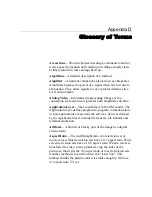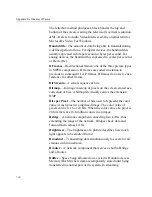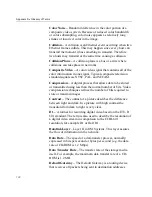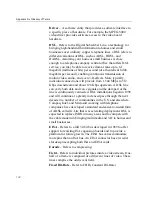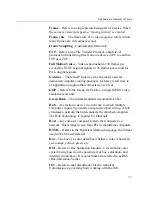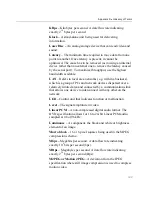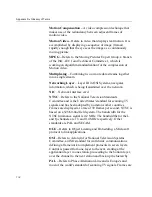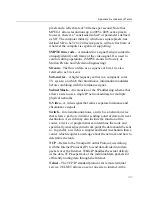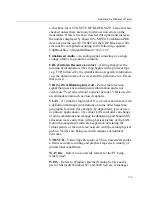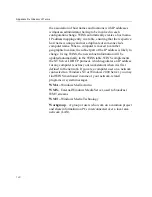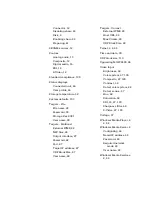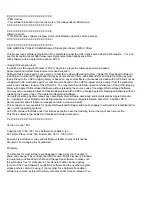
Appendix D
•
Glossary of Terms
SCSI (Small Computer System Interface) –
Interface that
allows up to 7 or 15 devices to be connected to a single SCSI
port in series (daisy-chain).
SDI –
Refers to Serial Digital Interface,
the standard based on a
270 Mbps transfer rate. This is a 10-bit, scrambled, polarity
independent interface, with common scrambling for both
component ITU-R 601 and composite digital video and four
channels of (embedded) digital audio. Most new broadcast
digital equipment includes SDI, which greatly simplifies its
installation and signal distribution. It uses the standard 75 ohm
BNC connector and coax cable as is commonly used for analog
video, and can transmit the signal over 600 feet (200 meters)
depending on cable type.
SECAM –
Refers to Sequential Color Avec Memoire, an
acronym for a color TV system developed in France and used in
the former USSR. SECAM operates with 625 lines per picture
frame and 50 cycles per second. It is incompatible with PAL
and NTSC.
Seek time –
The time required to position the Reading head
above the track containing the requested data.
Server –
A server is a computer program that provides services
to other computer programs in the same or other computers.
The computer that runs a server program is itself frequently
referred to as a server (though it may contain a number of server
and client programs).
In the client/server programming model, a server is a program
that awaits and fulfills requests from client programs in the
same or other computers. A given application in a computer
may function as a
client
with requests for services from other
programs and a
server
of requests from other programs.
SIF
– Refers to Standard (or Source) Input Format. This video
format was developed to allow the storage and transmission of
digital video. The 625/50 SIF format has a resolution of 352 x
288 active pixels and a refresh rate of 25 frames per second.
The 525/60 SIF format has a resolution of 352 x 240 active
136




